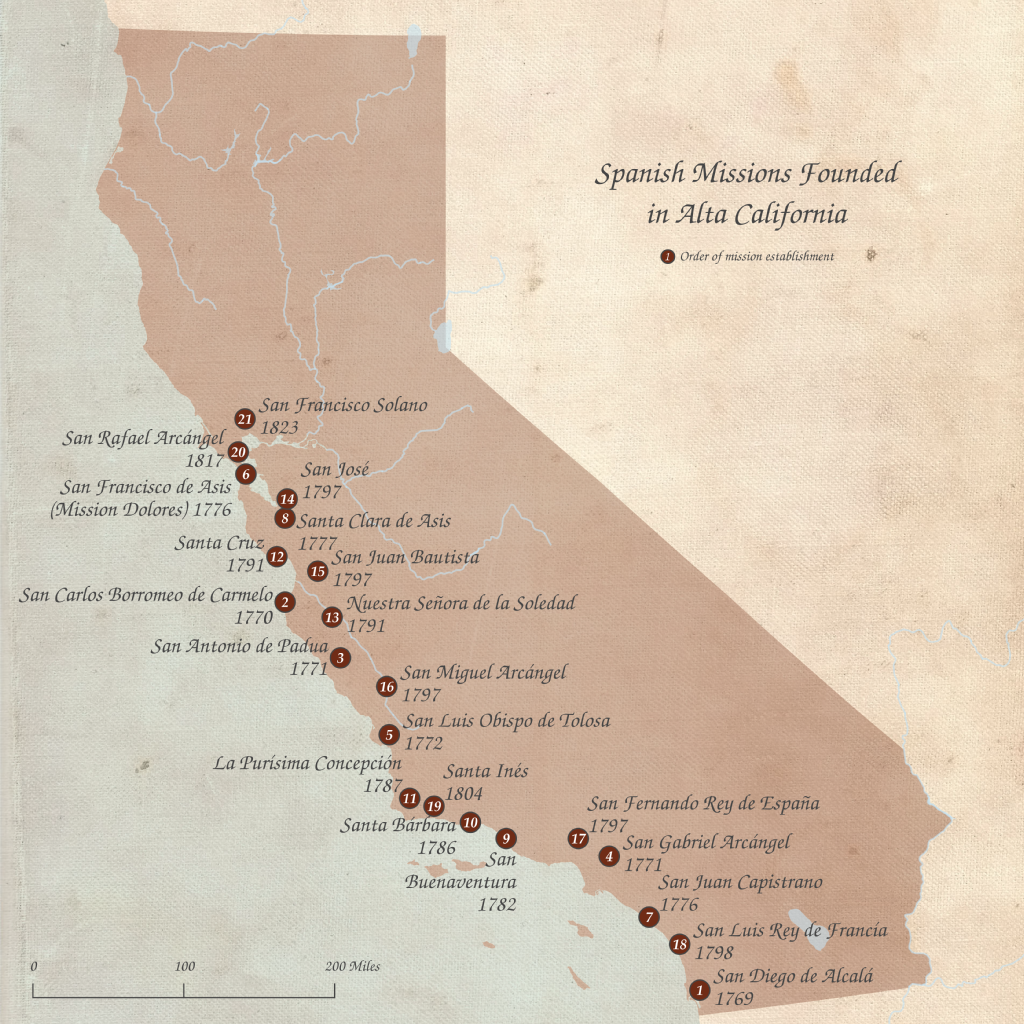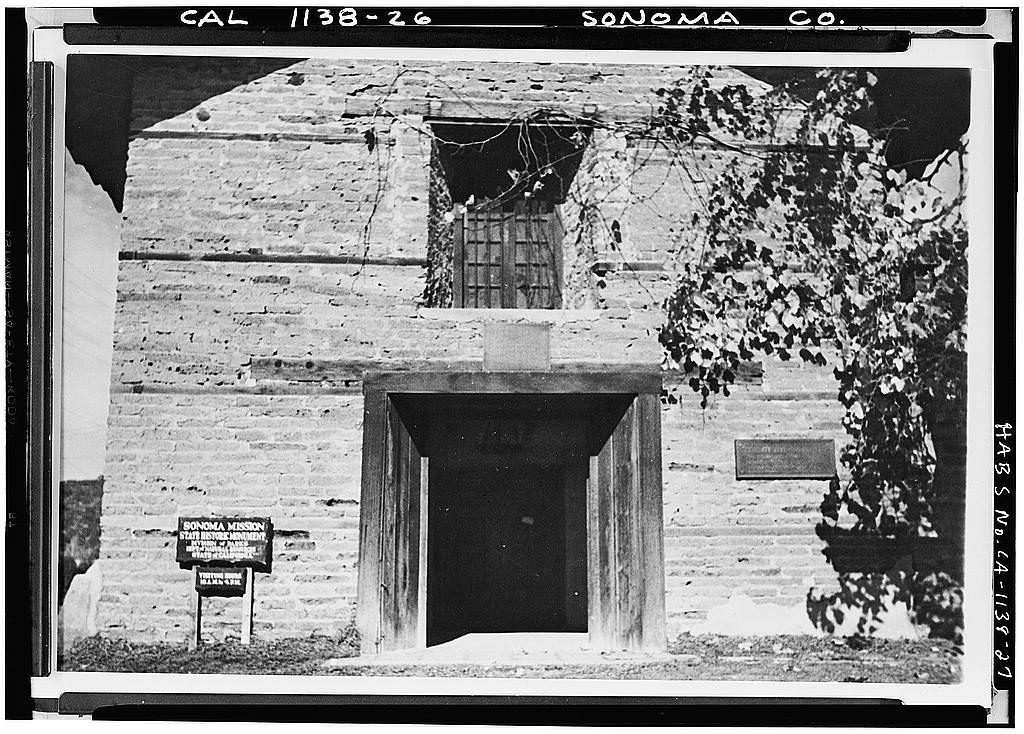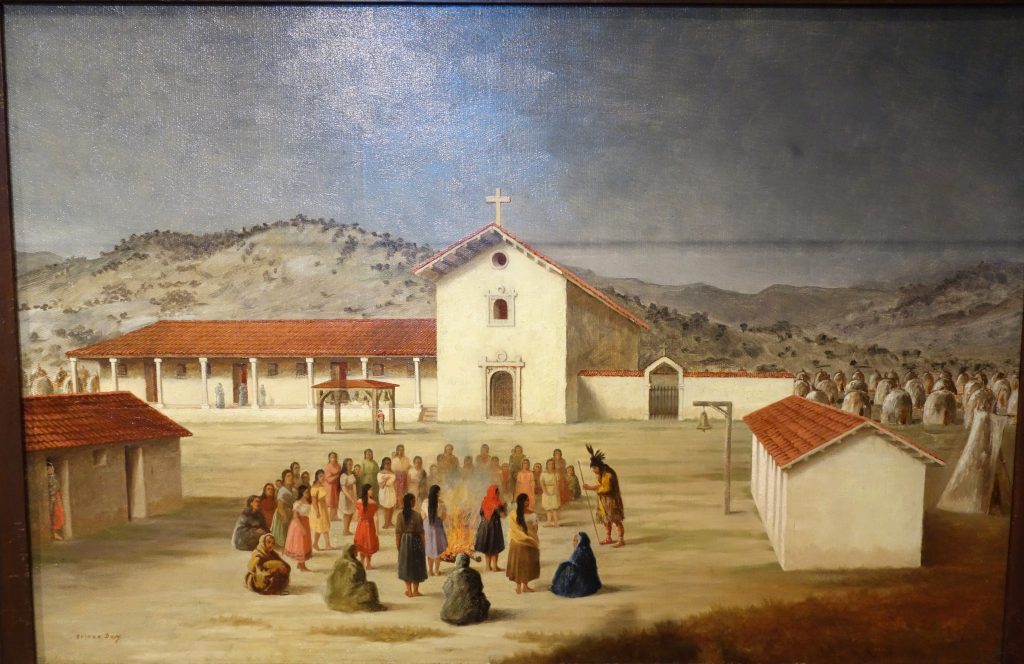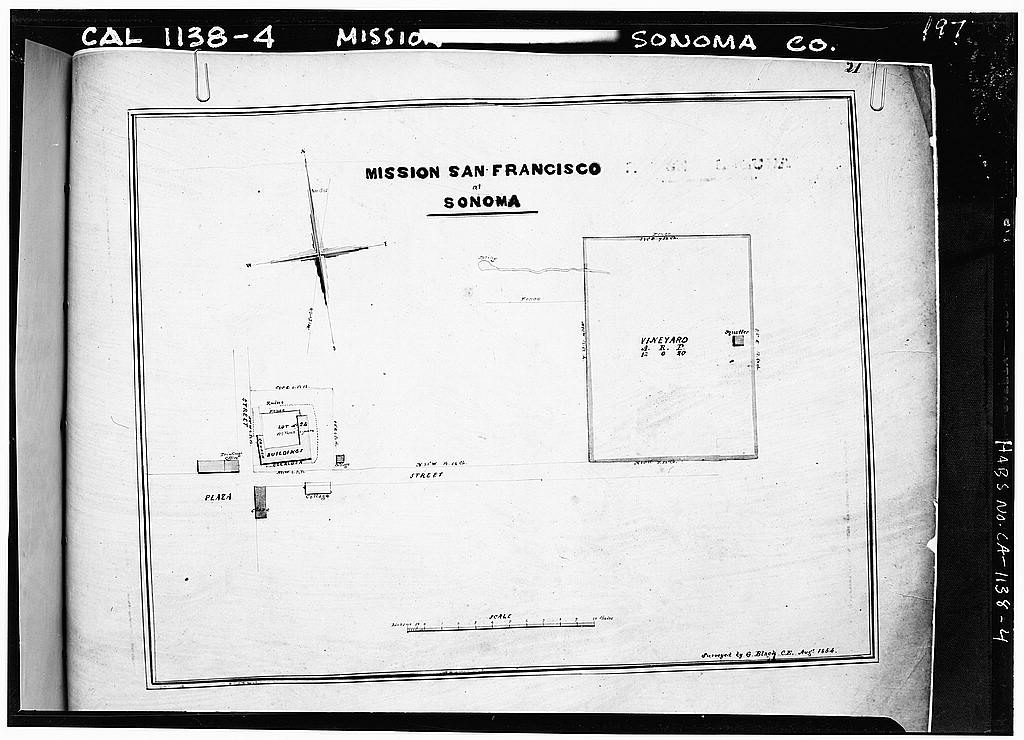
Shruti Mukhtyar [CC BY-SA 4.0 (https://creativecommons.org/licenses/by-sa/4.0)], via Wikimedia Commons
Numbers correspond to the order the missions were built.
Click on the images below for a closer look!
The first Mission in California was established in San Diego in 1769. The last Mission was built in the town of Sonoma in 1823, thirteen years after Spain withdrew funding from its California empire. The Missionization of coastal California was intended to Hispanicize the indigenous people of California, the missions themselves designed as “enculturation machines” (Lightfoot 2005, 50). They also brought with them diseases which indigenous people had no immunity to, as well as cattle and nonnative species of plants which caused ecological changes that reverberated across the landscape (Goerke 2007).
The Franciscan priests who established and ran the California missions were encouraged to treat their neophytes (the newly baptized) as a father would his family (Colley 1970). In order for missionization to be effective, native Californians were expected to adopt European habits, laying the groundwork for future generations of loyal subjects. In order to do this traditional ways of life had to be interrupted; although this was undeniably a violent transformation, some scholars point out that early missions didn’t rely on coercive methods. Inducements are occasionally cited as the reason why Indians willingly entered the mission system (Colley 1970), but others see the very structure of the missions as punitive (Lightfoot 2005). The intentional disruptions to Native culture and lifeways was only one of the violent traumas experienced by indigenous people during colonial expansion.
Fine Arts Museums of San Francisco. Mission San Francisco Solano de Sonoma, by Oriana Weatherbee Day. 1887. Wikimedia Commons,
https://commons.wikimedia.org/wiki/File:Mission_San_Francisco_Solano_de_Sonoma,_by_Oriana_Weatherbee_Day_(1838-1886),_1877-1884,_oil_on_canvas_-_De_Young_Museum_-_DSC01017.JPG
There were two Missions built north of San Francisco Bay, and both were built during Mexican rule: Mission San Rafael Archangel (1817) in San Rafael, and Mission San Francisco de Solano (1823) in Sonoma. Although Coast Miwok in the Cotati area were not documented in Mission records until 1818, we cannot assume that they didn’t feel the effects of colonial pressures prior to that. Disease often spread ahead of Missionaries, and there are records of Bodega Miwok allying themselves with Russians for protection against Mexico at around the same time that Miwok from Cotati entered the San Rafael Mission (Farris 1998).



